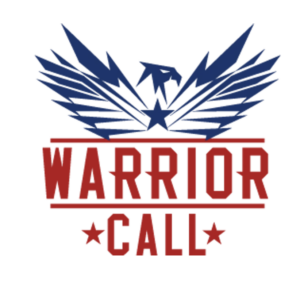Warrior Call: Serving Those Now Suffering After Serving Us

It was a day Frank Larkin will never forget. In April 2017, his son Ryan F. Larkin, a Navy SEAL who was struggling following his return to civilian life, committed suicide in the basement of the family’s home.
“He was wearing his SEAL Team 7 T-shirt, red, white, and blue board shorts, and illuminated a shadow box next to where he was,” said Larkin as he choked up while talking with DCJournal.
He had just recounted how his son fought a losing battle not only inside his own head but with the Veterans Administration. “He says… ‘All they do is keep writing me prescriptions and these drugs, I don’t even feel like I’m in my own body.’ And he said to me, ‘I’m banged up inside.’”
Government statistics say there were 6,146 veteran suicide deaths in 2020, almost 60 percent higher than non-veteran adults. The next year, 519 active-duty members of the Armed Forces took their own lives.
Larkin, a former Navy SEAL and Secret Service agent who also served as the 40th U.S. Senate Sergeant at Arms, used his son’s death to form Warrior Call. It connects veterans and former first responders with resources to help them get past isolation and thoughts of suicide.
“In many cases, it’s because the time they spent in service to our country is not well understood by our society,” Larkin said. “So, when they come out of their service, or while they’re still in uniform, there’s kind of a translation challenge with folks who are on the outside that have not served to understand what life is in uniform.”
Visible injuries sustained while on duty may be one reason why veterans and first responders have trouble adapting to civilian life. But invisible injuries also exist, mainly in the form of Traumatic Brain Injuries (TBI). In March, researchers from the Naval Health Research Center discovered a combination of high-level and low-level blasts may increase the chances of military members later developing migraines and Post Traumatic Stress Disorder (PTSD). It is a recipe for disaster in the brain, the researchers noted, when combined with injuries from either contact sports or a car or vehicle accident.
Their conclusion was there is a need for “public health surveillance initiatives for blast exposure and or safety recommendations for training and operational environments.”
The good news is Congress seems to be getting on board. The Senate has passed a resolution making November 12 National Warrior Call Day. It encourages Americans to call active duty military members, veterans, and first responders and talk with them about how they are feeling. The resolution implores people to connect veterans with support, knowing that it could save their lives.
“Those who have taken the oath to defend our country deserve our appreciation and support long after their service ends,” said Sen. Jeanne Shaheen (D-N.H.) in a statement. She and Sen. Tom Cotton (R-Ark.) co-wrote the Warrior Call Day resolution. “I’m glad the Senate passed my bipartisan resolution that, if signed into law, would designate a National Warrior Call Day to help raise awareness and strengthen the relationship between veterans and civilians.”
The House has yet to vote on National Warrior Call Day, something that has caused Larkin to feel frustrated. He wants veterans and first responders to realize that they are not alone. “Much of this work, at least the advancement of the knowledge of what’s going on, especially with regard to brain health, is occurring in the nonprofit and the private sector with a lot of the universities and research institutions that are not aligned with the government,” he said.
He hopes people will start checking up on veterans that they know. “If you sense that they’re not in a good place, then get them tied up with some resources that potentially can help pull them out of the darkness and get them to a better place.”
Larkin vows to not stop until veterans get all the help that they can get. He sees Warrior Call as part of the solution. “That became my mission… After [my son’s] death, I knew what he wanted, and I picked up that baton, and I’m just leaning forward.”


